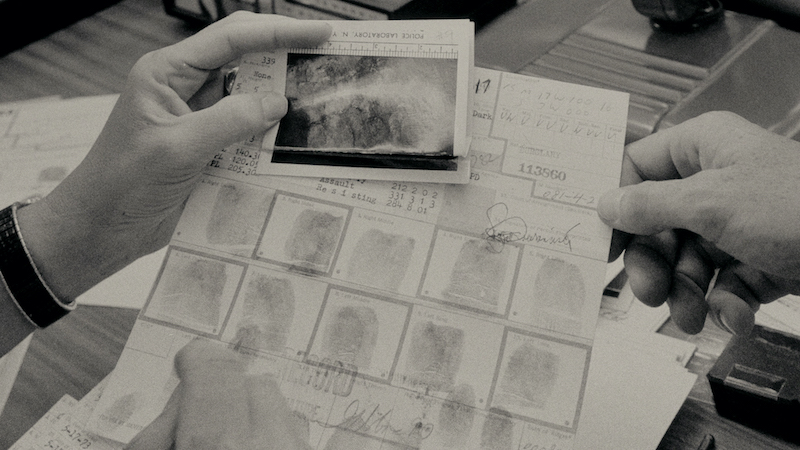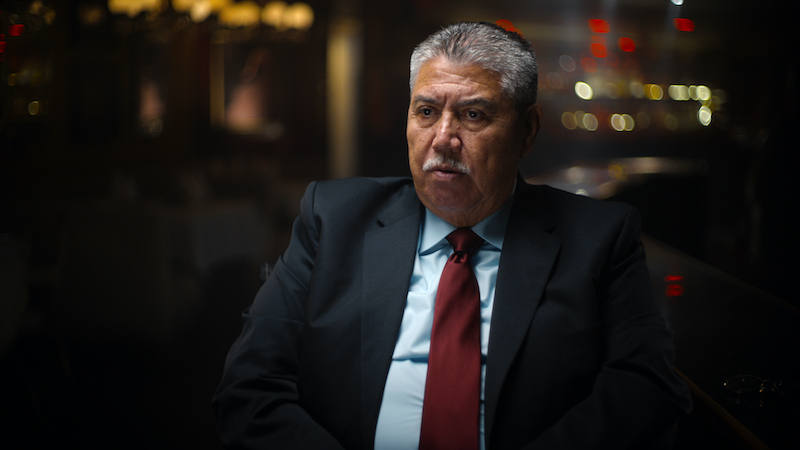
Netflix’s new documentary Night Stalker: The Hunt for a Serial Killer is a four-part series on how investigators and an East L.A. community put an end to serial killer Richard Ramirez’s violence. Through interviews and archival footage, it explores the quest to identify and stop the murderer and the mark he left on his victims, their families, and the communities he terrorized.
The limited series kicks off with a cliché we’ve seen in true crime before. Los Angeles is so sunny and glamorous, but also actually very dark! In Night Stalker, it’s the summer of 1985. Bruce Springsteen’s “Glory Days,” which would have been on the Billboard Hot 100 then, plays overtop a cheery narration highlighting the city’s Hollywood glitz, perpetual sun, and recent hosting of the 1984 Summer Olympics. But “Glory Days” soon begins to warble because this documentary is about murder.
Yet despite the ominous shots of freeways after dark and a soundtrack of trembling strings, Night Stalker does stray from at least one trope: focusing intently on the killer. Instead, we hear from survivors, family members of the victims, and the reporters who covered the case. Most predominantly, we hear from the two LASD homicide detectives who hunted Ramirez: Gil Carrillo, a then mid-30s Vietnam vet who grew up in East L.A., and his partner Frank Salerno, a respected veteran of the force who had previously worked the Hillside Strangler murders.
They tell not just how they went about searching for clues, staking out dentist’s offices, and pursuing every possible lead, but the stress it put on them and their families. They discuss the friction between their investigation and the media, politicians, and other law enforcement jurisdictions.

The documentary also paints a compelling picture of mid-80s L.A. I was not alive in 1985, but I have talked to a few people who remembered what it was like to live here then. I once met a Lyft driver who told me temperatures soared that summer, but his family was too afraid to open their windows for fear the unknown killer might climb through. I got the impression he told that story a lot, but he wasn’t making it up. As the series highlights, frightened residents were buying guns, guard dogs, and heavy-duty locks. They enrolled in self-defense courses, hoping to fight off would-be intruders.
In part, the widespread terror and the difficulties of the investigation were due to Ramirez’s patterns—or lack thereof. The “Night Stalker” wasn’t like other serial killers. His victims weren’t linked by age, race, or gender. He struck in communities ranging from the Bay Area to Mission Viejo. Sometimes he would commit multiple crimes in the same night.
His behaviors were so erratic other officers initially didn’t believe Carrillo’s theory that the man behind a series of child abudctions and the murders were the same person until Salerno—and later, a distinctive shoe print—backed him up.
As compelling as the investigation is on its own, the series never lets up on the drama. It doesn’t shy away from grisly photos of crime scenes or descriptions of Ramirez’s deeds. It inserts gunshot and ticking clock sound effects, juxtaposed against gloomy night skylines. In some ways, it’s a little too dramatic, a little too, well, true crime, but it works in the final episode when the tense situation Ramirez wrought comes to a head in his capture.
It also serves as a reminder that Ramirez was, as should be obvious, a bad person. Though glorified in some properties by handsome actors who play him with a rock ’n roll swagger (looking at you, American Horror Story), Night Stalker is clear. He was an evil man whose survivors recalled his rotting teeth and pungent body odor. He killed at least 14 people in California, sexually assaulted numerous women and children, and made an entire state live in fear. He was sentenced to death for those crimes, but died in 2003 at 53 while awaiting execution.
Night Stalker: The Hunt for a Serial Killer is now available on Netflix. For more on the case, you can check out the Los Angeles Public Library’s L.A. in Focus episode “The Night Stalker Case Revisited: Insights From the Lead Investigator,” which also features Carrillo.


